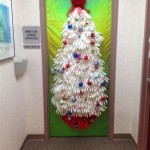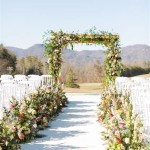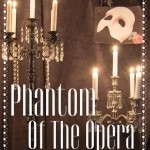Mid-Century Modern Home Decor Ideas
Mid-century modern design, originating from the mid-1930s to the mid-1960s, continues to captivate homeowners with its timeless appeal. Characterized by clean lines, organic forms, and a focus on functionality, this style effortlessly blends form and practicality. Incorporating mid-century modern elements into a home can create a space that is both stylish and comfortable. This article explores various ideas for achieving this aesthetic.
Furniture plays a pivotal role in mid-century modern design. Key pieces include iconic chairs such as the Eames Lounge Chair and Ottoman, the Wishbone Chair, and the Barcelona Chair. These pieces often feature tapered legs, molded plywood, and genuine leather upholstery. Sofas, like the Florence Knoll Sofa, typically showcase simple silhouettes and button tufting. Coffee tables often incorporate materials like wood, glass, and metal, reflecting the period's emphasis on mixed materials.
Color palettes in mid-century modern spaces often draw inspiration from nature. Warm earth tones such as browns, oranges, and yellows are frequently used alongside muted greens and blues. These colors are often paired with contrasting neutrals like white, beige, or gray to create a balanced and harmonious aesthetic. Bold accent colors like teal, mustard yellow, and burnt orange can be introduced through accessories and artwork to add visual interest.
Lighting is a crucial element in highlighting the clean lines and open spaces characteristic of mid-century modern design. Iconic lighting designs from the era, like the Artichoke Lamp or the Arco Floor Lamp, can serve as statement pieces. Pendant lights with geometric shapes or globe-shaped chandeliers can be used over dining areas or living rooms. Table lamps with slender bases and simple shades provide functional lighting while maintaining the minimalist aesthetic.
Textiles add warmth and texture to mid-century modern interiors. Geometric patterns, abstract designs, and organic motifs are common features in upholstery fabrics, rugs, and curtains. Materials like wool, linen, and cotton are favored for their natural feel and durability. Throw blankets and cushions with textured fabrics can be incorporated to enhance comfort and add visual interest to seating areas.
Decorative accessories contribute significantly to the overall mid-century modern ambiance. Sculptural pieces made from wood, ceramic, or metal can add a touch of artistic flair. Wall art often features abstract paintings, graphic prints, or framed vintage posters. Clocks with simple faces and minimalist designs are also characteristic of the period. The strategic placement of these accessories can elevate the space and showcase personal style.
Flooring in mid-century modern homes often emphasizes natural materials. Hardwood floors with a natural finish or parquet flooring create a warm and inviting atmosphere. Large format tiles in neutral colors like beige or gray can also be used to complement the minimalist aesthetic. Area rugs with geometric patterns or textured weaves can be strategically placed to define different areas within the open-plan layouts common in mid-century modern homes.
Window treatments in mid-century modern design prioritize natural light and unobstructed views. Sheer curtains or blinds made from natural materials like bamboo or wood allow sunlight to filter through while maintaining privacy. Drapery is generally avoided unless necessary for light control or insulation. The emphasis is on maintaining the clean lines and open feel of the space.
Architectural details play a significant role in defining the mid-century modern aesthetic. Exposed beams, brick walls, and large windows are common features that contribute to the open and airy feel of these homes. Fireplaces often serve as focal points in living areas, featuring minimalist designs with brick or stone surrounds. The integration of natural elements, like indoor plants, further enhances the connection to nature.
Wall decor is an opportunity to showcase the artistic sensibility associated with mid-century modernism. Large-scale abstract paintings or graphic prints can add a pop of color and visual interest. Gallery walls featuring a curated collection of framed prints or photographs can create a personalized focal point. Mirrors with simple frames can be used to enhance natural light and create a sense of spaciousness.
Incorporating natural elements is a key principle of mid-century modern design. Indoor plants, such as fiddle leaf figs, snake plants, or monstera deliciosa, add a touch of life and vibrancy to the space. The use of natural materials like wood, stone, and leather further reinforces the connection to nature. These elements contribute to a calming and inviting atmosphere while enhancing the overall aesthetic.
Storage solutions in mid-century modern homes are designed to be both functional and aesthetically pleasing. Built-in shelving units or credenzas with clean lines and simple hardware provide ample storage space while maintaining the minimalist aesthetic. Storage baskets made from natural materials like wicker or seagrass can be used to conceal clutter and add a touch of texture.

45 Irresistibly Stylish Midcentury Modern Living Room Idea
:strip_icc()/5c48ff_5039b19792c04cda85d4a706e47cd68f_mv2_d_6530_4436_s_4_2-2614b1611d724a2b8bf69ac17ab410de.jpeg?strip=all)
15 Midcentury Modern Décor And Design Ideas

How To Create A Mid Century Modern Living Room Swyft

Mid Century Modern Interior Design What Is It And Stunning Examples

Mid Century Modern Living Room Ideas For Functionality Comfort Decoist

45 Irresistibly Stylish Midcentury Modern Living Room Idea

Mid Century Modern Home Interiors Design And Decor Ideas In Retro Styles Interior Living Room

Mid Century Modern Living Rooms That Will Brighten Your Home Decor

Mid Century Modern Living Room Ideas Forbes Home

Midcentury Modern Style 101







